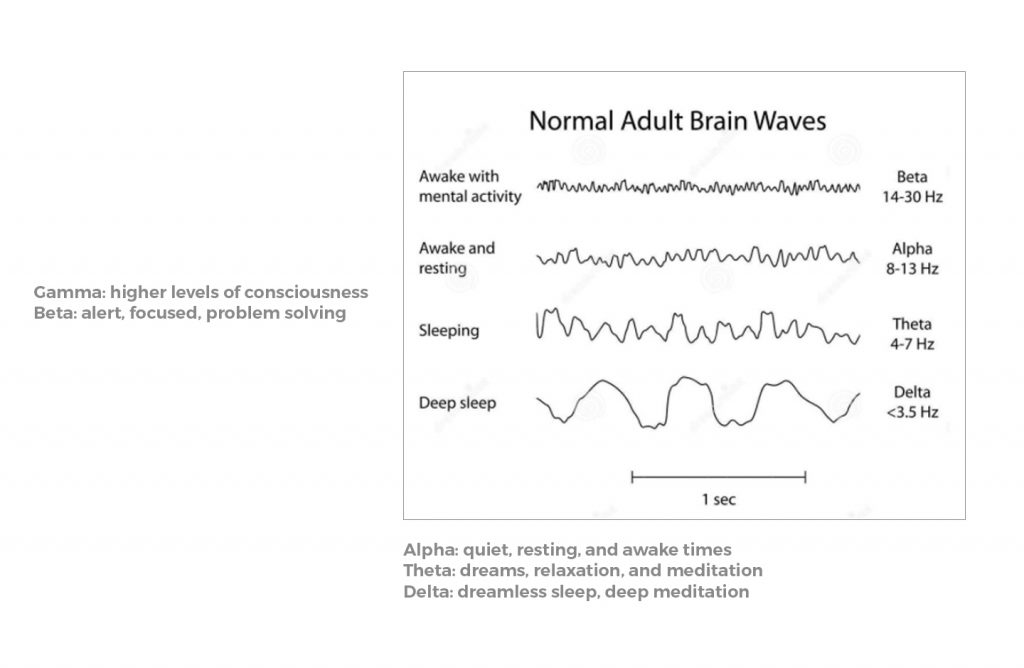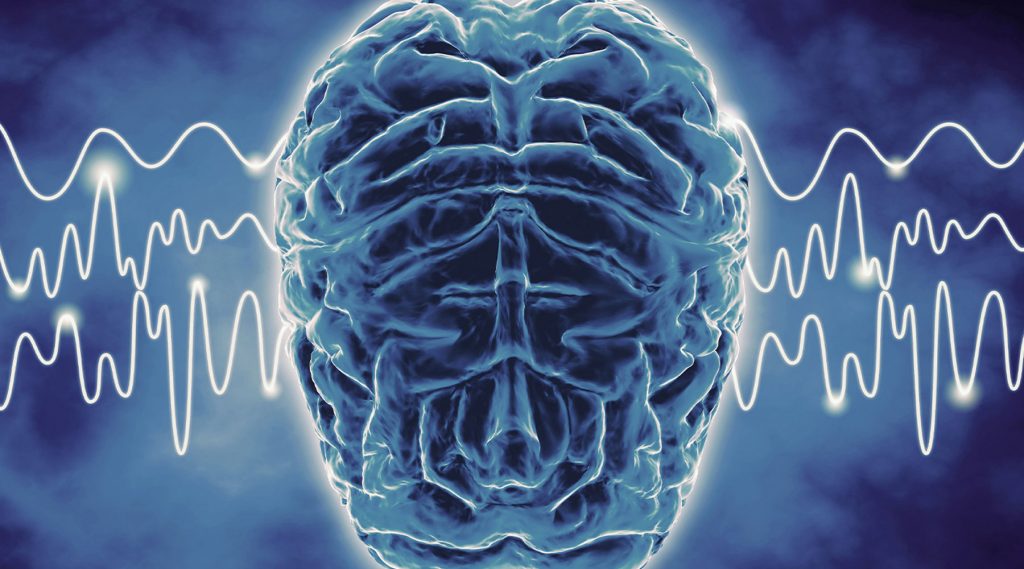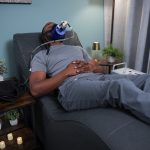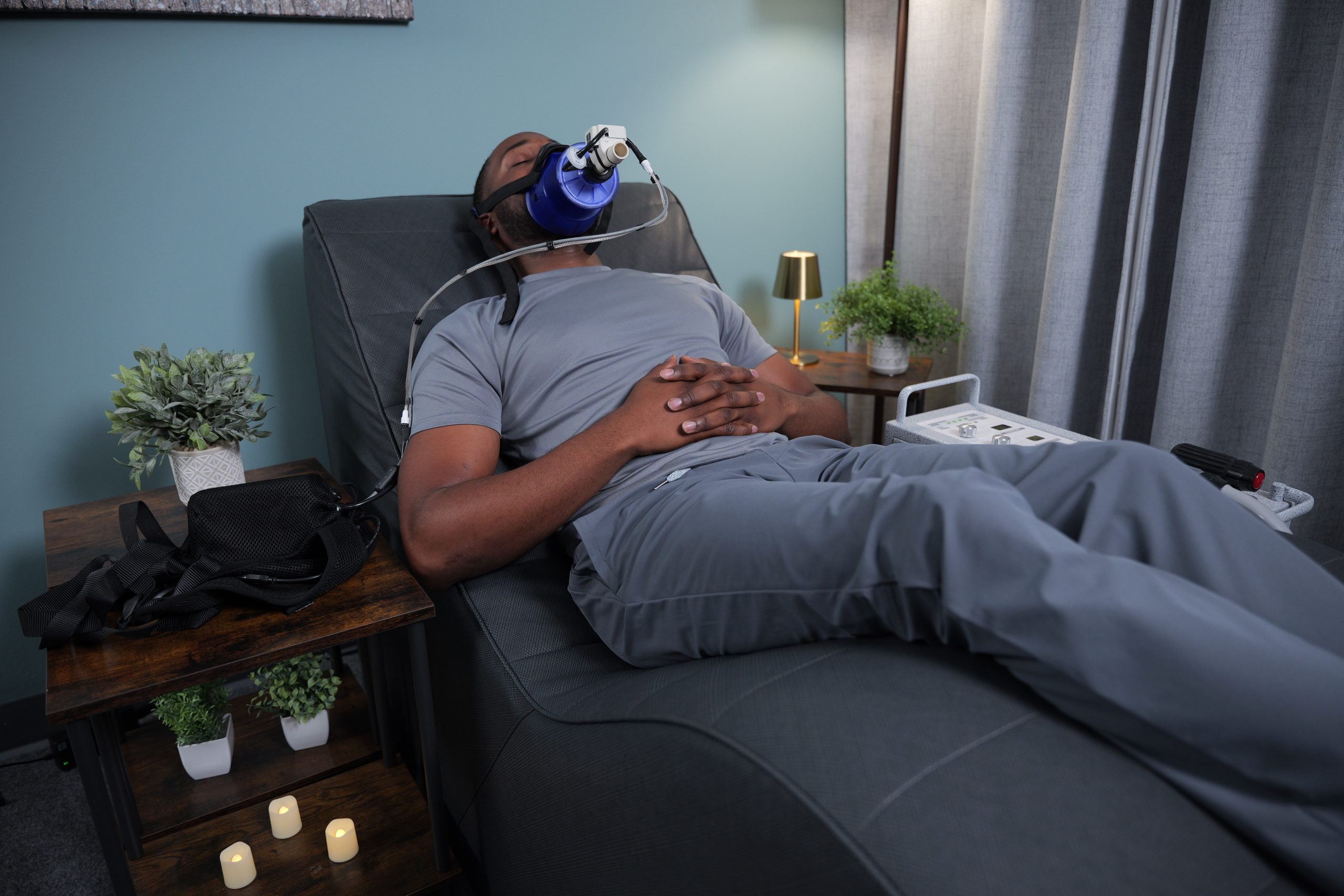Scientific advancements have allowed us to measure brainwaves of different frequencies, which the brain employs at different states of wakefulness and consciousness. We’ve been asked if it’s possible to “speak the brain’s language” by mimicking these brainwave frequencies with PEMF technology. Here’s the answer…
Introduction to Brainwave Frequencies
From the earliest days of EEG that made it possible to study brainwaves, scientists have observed alpha waves—”waves of the first order”— in the occipital lobe when a person is resting and visual stimulation is blocked. Upon opening the eyes, alpha waves are replaced with “waves of the second order”—beta waves. Alternatively, when the resting wakefulness of alpha shifts downward to drowsiness, theta rhythm manifests. Finally, the brainwaves shift downward to delta as we fall asleep.

Psychiatrist Hans Berger first observed alpha waves in 1929. As mapping techniques improved over decades, several variants of alpha rhythms came to light. These range from 8 to 13 cycles per second (or Hz) and appear in the occipital, parietal, and central areas.
In the hierarchy of brainwave frequencies, the alpha wave at 10 Hz is the metaphorical “fulcrum frequency.” It is the brain’s natural idle speed between the deep sleep of delta and the alert focus of beta. In primary sensory areas, they are responsible for maintaining optimal function. Beyond that, the alpha brainwave is embedded with different kinds of information, like a radio wave that carries voices and music through air.
Alpha waves also play an important role in our sleep wake cycle. In fact, researchers hypothesize that 10 Hz synchronized across both brain hemispheres may help humans achieve a relaxed state of peak performance.
Alpha Brainwaves and the Schumann Resonances
When lightning strikes, it creates electromagnetic waves in the earth-ionosphere cavity in the extremely low frequency range below 100 Hz. The Schumann Resonances are excited at the primary frequency of (circa) 8 Hz. From there, the lesser harmonics continue in progression to 14 Hz, 20 Hz, and so on. These are posited to have been present during the origin of living systems. (Saroka)
“Schumann resonances, defined by spectral peaks at approximately 8, 14, 20, 26, and 33 Hz, show remarkable consistency with electroencephalographic (EEG) activity in terms of frequency and intensity.” (Saroka)
As a species, and over time, humans have proven to be extremely adaptable to extraordinary stresses. In the modern era, some types of stress are invigorating, stimulating elation or creativity. However, stress is also linked to challenges to the coping and adapting mechanisms of the body or homeostasis. According to research, people who are stressed have a diminished ability to produce these waves. (Kropotov)
Pulsing at the Alpha Rhythm
So, is it possible to use PEMF technology to mimic these brainwave rhythms and experience the benefits of resting wakefulness of alpha living? First and foremost, remember that the electromagnetic field generated by Pulse technology does not interact with organs such as the brain. Instead, the electromagnetic field stimulates and exercises the cells, providing them with additional energy.
Next, consider that all brainwaves run continuously in different areas of the brain. The pulses per second released by a PEMF system will not enforce any dominant brainwave frequencies throughout the brain.
That being said, layering PEMF with a pulse rate of 10 Pulses Per Second (PPS), which mimics the alpha brainwave, may increase the benefits of resting wakefulness. In fact, most people find this setting generally relaxing[4,5] and notice a correlation between PPS Setting and their state of rest or wakefulness.
Does it work?
Try it for yourself! Take a Wellness 15 (15 minutes of holistic self-care) and enhance your body’s natural recovery process[2] with PEMF. To locate a Pulse Professional near you, visit our Locator Map.
[2,4,5]To learn more about the citations referenced above, visit info.pulsecenters.com/research.
Additional Works Cited
Saroka KS, Vares DE, Persinger MA Similar Spectral Power Densities Within the Schumann Resonance and a Large Population of Quantitative Electroencephalographic Profiles: Supportive Evidence for Koenig and Pobachenko. In: PLOS ONE.
Kropotov JD (2016) Functional neuromarkers for psychiatry: Applications for diagnosis and treatment. Elsevier/Academic Press, Amsterdam.












